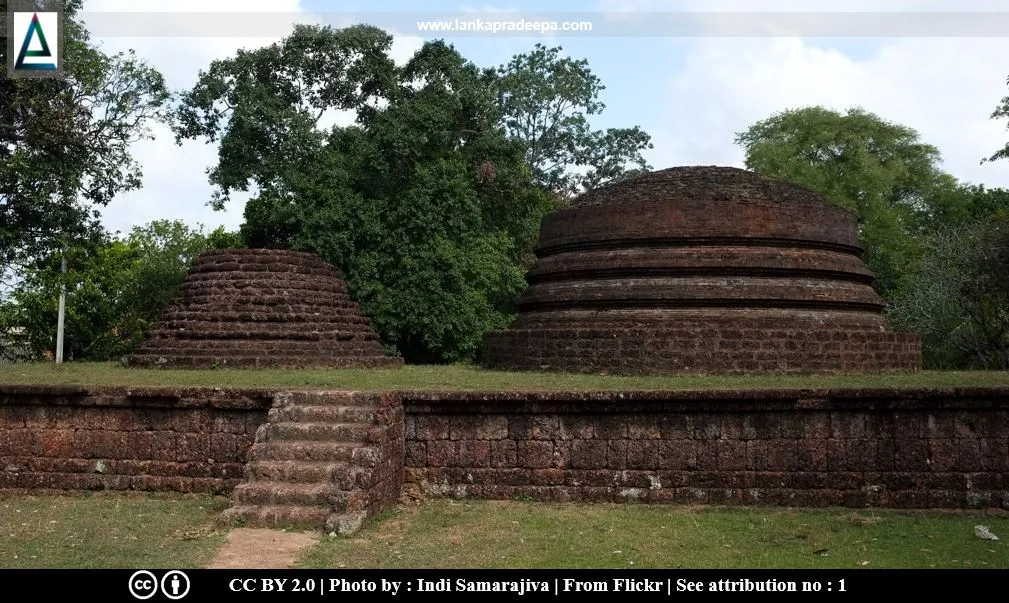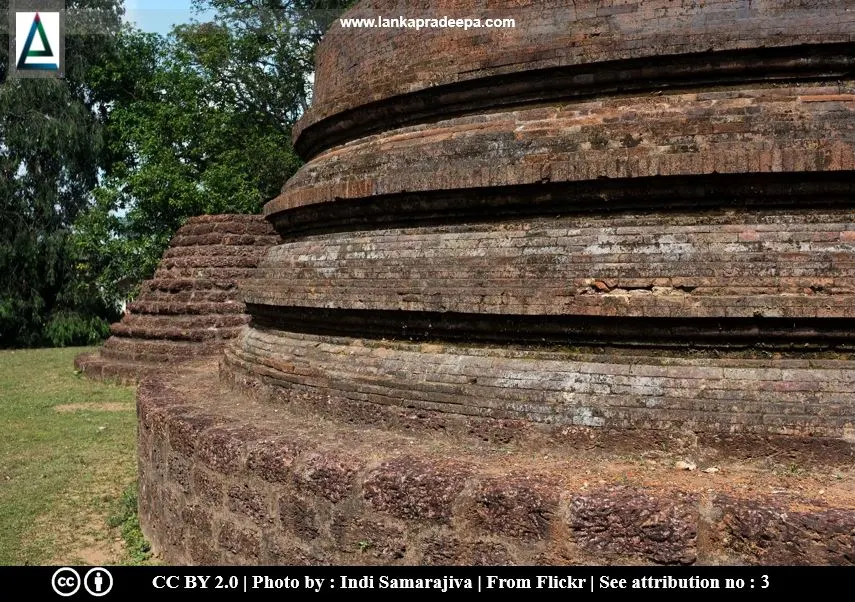
Veherakanda (also known as Beddagana Kota Vehera) is an archaeological site located in the village of Beddagana in Colombo District, Sri Lanka.
History
During the Dutch period (1658-1796 A.D.), this site was used as a church cemetery. Therefore, at that time this place was called by the locals as Vehera Kanatta (Rajapakshe et al., 2018).
The two non-identical Stupas which have been built on a rectangular platform are considered to be the main archaeological monuments at the site. They were unearthed by an exploratory excavation carried out by the Department of Archaeology in 1949. According to the opinion of S. Paranavitana, these Stupas may represent the mausoleums of King Parakramabahu VI (1412-1467 A.D.) and his queen Ran Menika [(or Swarna Menike) Rajapakshe et al., 2018].
The two non-identical Stupas which have been built on a rectangular platform are considered to be the main archaeological monuments at the site. They were unearthed by an exploratory excavation carried out by the Department of Archaeology in 1949. According to the opinion of S. Paranavitana, these Stupas may represent the mausoleums of King Parakramabahu VI (1412-1467 A.D.) and his queen Ran Menika [(or Swarna Menike) Rajapakshe et al., 2018].
However, some believe that these monuments represent the ruins of an ancient Devalaya dedicated to God Kataragama (Wijewardana et al., 2011).
Monuments
Two Stupas, a rectangular platform, and several ruins of old structures are found at the site. The rectangular platform is made up of "Kabok" (laterite) stones and is about 97.1 ft. (29.6 m) long, 53.1 ft. (16.2 m) wide, and 5.5 ft. (1.7 m) tall (de Silva, 1990; Rajapakshe et al., 2018). Two sets of steps on the northern and western sides provide access to the platform (Wijewardana et al., 2011). The smaller Stupa having a diameter of 21.3 ft. (6.5 m), has been entirely built out of Kabok stones (de Silva, 1990; Rajapakshe et al., 2018). The larger Stupa is about 30 ft. (9.2 m) in diameter and remains in a good state of preservation (de Silva, 1990; Wijewardana et al., 2011). The base of the larger Stupa is made of Kabok stones but the upper part has been constructed using bricks. The "Pesa Walalu" (three tiers) are visible on both monuments. In addition to the Stupas, remains of an old image house and a rampart of a Bodhi tree have been identified at the site (Rajapakshe et al., 2018).
The architectural format of this site shows similarities to that of the ruins at Bandagiriya, Kudumbigala, Yahangala and Alahana Pirivena in Polonnaruwa (de Silva, 1990).
An archaeological reserve
The site known as Veherakanda (Lots 1 and 2 in PPA 2323 and Lot 1 in PPA 3103) located in the village of Beddagana in Grama Niladhari Division of Pita Kotte (no.522 A) in the Divisional Secretary’s Division of Sri Jayawardanapura Kotte is an archaeological reserve, declared by a government gazette notification published on 26 June 1964.

 .
.Attribution
1) Beddagana Veherakanda by Indi Samarajiva is licensed under CC BY 2.02) Beddagana Veherakanda by Indi Samarajiva is licensed under CC BY 2.0
3) Beddagana Veherakanda by Indi Samarajiva is licensed under CC BY 2.0
References
1) de Silva, N., 1990. Sri Lankan architecture during the period 1200-1500 A.D. Wijesekara, N. (Editor in chief). Archaeological Department centenary
(1890-1990): Commemorative series: Volume III: Architecture. Department of Archaeology (Sri Lanka). p.79.
2) Rajapakshe, S.; Bandara, T. M. C.; Vanninayake, R. M. B. T. A. B. (Editors), 2018. Puravidya Sthana Namavaliya: Kolamba Distrikkaya (In Sinhala). Vol. I. Department of Archaeology (Sri Lanka). ISBN: 978-955-7457-19-2. pp.8-9.
3) The government gazette notification: No: 14080. 26 June 1964.
4) Wijewardana, A., Thilakawardana, A. E. L., Priyangani, S., 2011. Aithihasika Kotte (In Sinhala). Department of Archaeology (Sri Lanka). ISBN: 978-955-9159-69-8. pp.16-17.
2) Rajapakshe, S.; Bandara, T. M. C.; Vanninayake, R. M. B. T. A. B. (Editors), 2018. Puravidya Sthana Namavaliya: Kolamba Distrikkaya (In Sinhala). Vol. I. Department of Archaeology (Sri Lanka). ISBN: 978-955-7457-19-2. pp.8-9.
3) The government gazette notification: No: 14080. 26 June 1964.
4) Wijewardana, A., Thilakawardana, A. E. L., Priyangani, S., 2011. Aithihasika Kotte (In Sinhala). Department of Archaeology (Sri Lanka). ISBN: 978-955-9159-69-8. pp.16-17.
Location Map
This page was last updated on 30 April 2023

